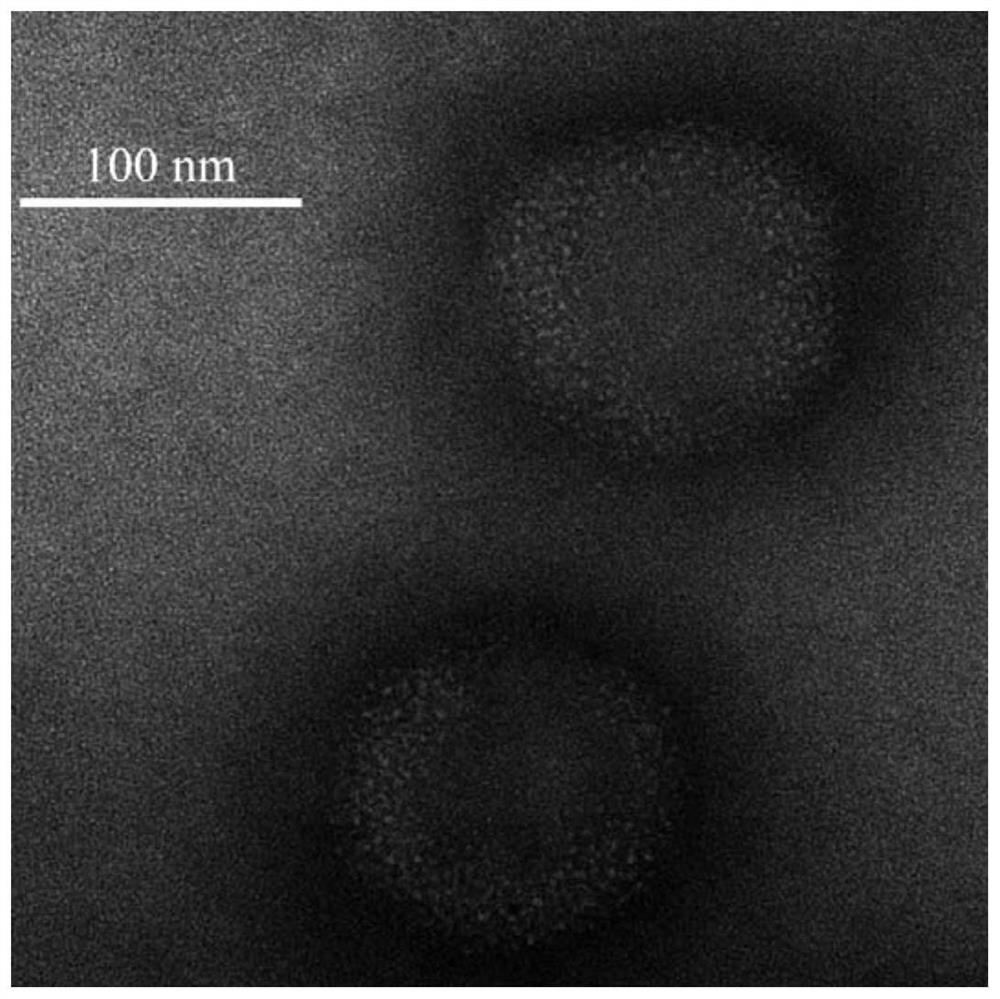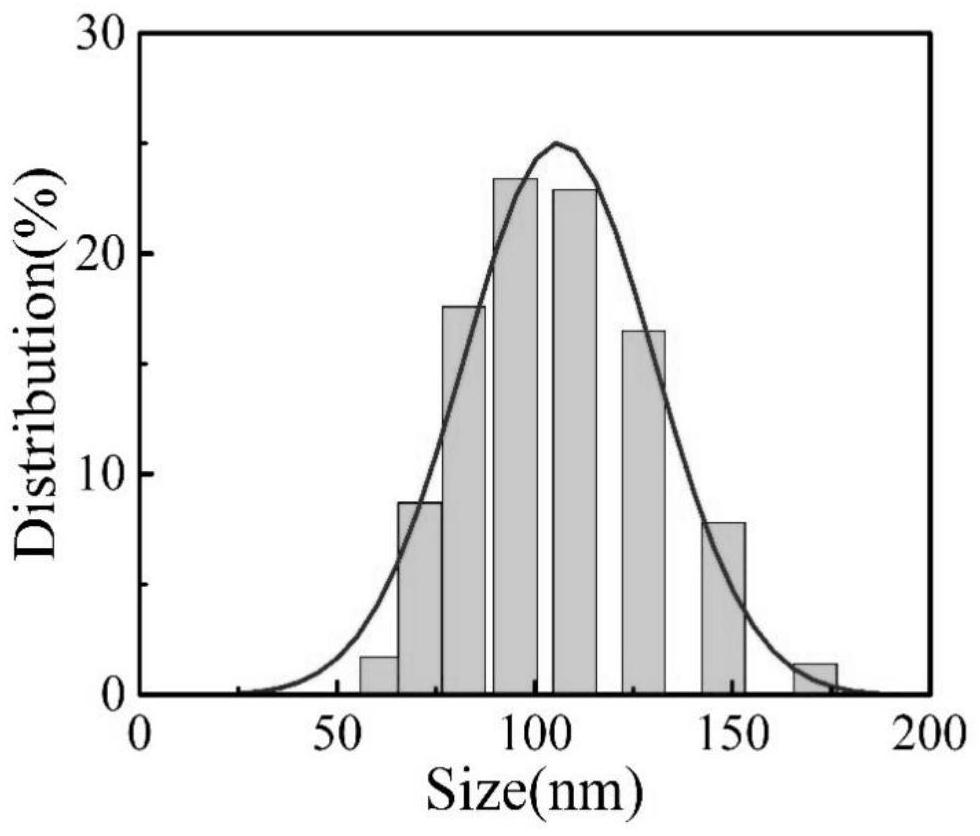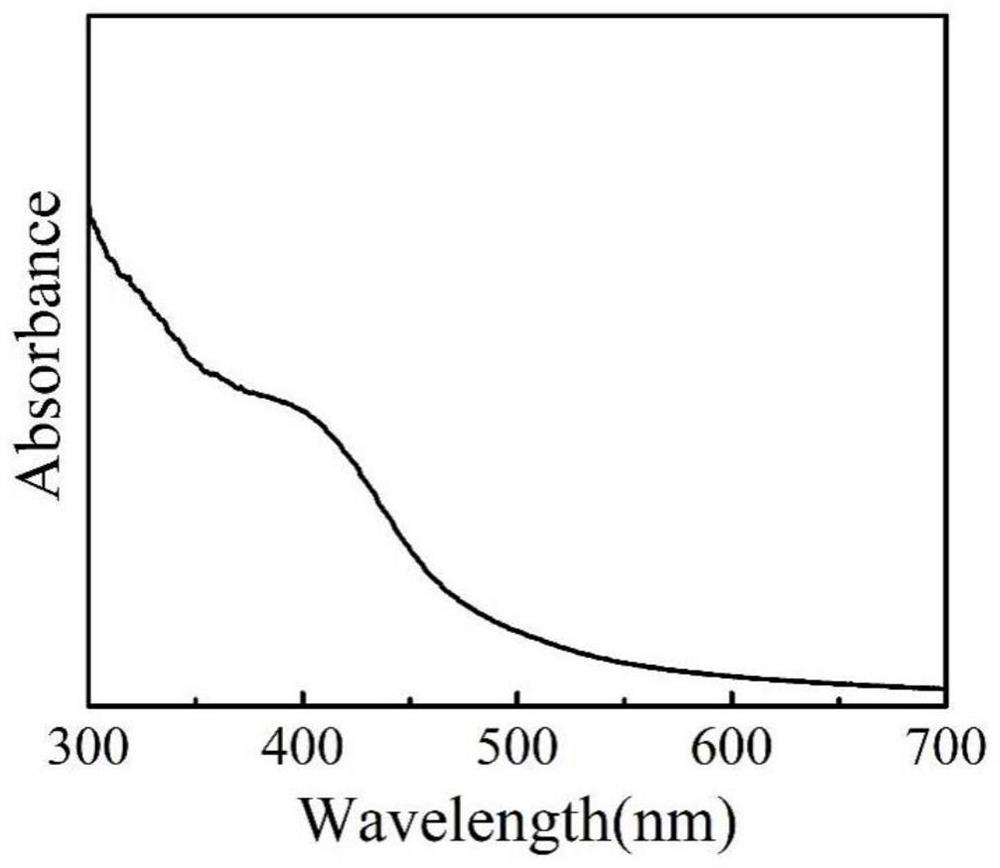Carbon dot with rosmarinic acid as carbon source and preparation method and application thereof
A technology of rosmarinic acid and carbon dots, which is applied in the field of nanomaterials, can solve the problems of application limitation, high biological toxicity, and is not easily soluble in water, and achieves the effects of simple preparation method, uniform particle size and good water solubility.
- Summary
- Abstract
- Description
- Claims
- Application Information
AI Technical Summary
Problems solved by technology
Method used
Image
Examples
Embodiment 1
[0055] Embodiment 1: A kind of carbon dot
[0056] This embodiment provides a kind of carbon dots (CDs), the carbon dots are nitrogen-doped carbon dots, and the carbon source of the carbon dots is rosmarinic acid.
Embodiment 2
[0057] Embodiment 2: A kind of method for preparing carbon dot
[0058] This example provides a method for preparing the carbon dots described in Example 1. The method is as follows: add 0.1 g of rosmarinic acid to 15 mL of deionized water to obtain a precursor solution; add 150 μL of ethylenediamine to the precursor solution to obtain a mixed solution; the use concentration is 0.01mol L -1 hydrochloric acid to adjust the pH of the mixed solution to 5 to obtain a reaction system; the reaction system was added to a high-temperature reactor, and calcined at 150°C for 8 hours to obtain a reaction solution containing carbon dots; the reaction solution containing carbon dots was naturally cooled to After room temperature (25°C), first filter with a filter membrane with a pore size of 0.22 μm to remove larger particles, then add the filtered filtrate to a dialysis bag (cut-off Mn=1.0kDa) for dialysis for 6 hours, and finally the dialysis obtained The dialysate was freeze-dried at -...
experiment example 1
[0059] Experimental example 1: Performance testing experiment of carbon dots
[0060] This experimental example provides the performance detection experiment of the carbon dot described in embodiment 1, and the experimental method and results are as follows:
[0061] Experiment 1: Dissolve 500 μg of carbon dots prepared in Example 2 in 10 mL of deionized water to obtain a carbon dot concentration of 0.05 mg·mL -1 The carbon dot stock solution; use the H-600 transmission electron microscope (FEI, the U.S.) to shoot the carbon dot stock solution, obtain the transmission electron microscope (TEM) photo of the carbon dot in the stock solution, see the photo figure 1 . From figure 1 It can be seen that the carbon dots in the stock solution are spherical, and the dispersion in water is very good.
[0062] Experiment 2: Take the carbon dot stock solution obtained in Experiment 1, and use a dynamic light scattering laser particle size analyzer (Malvern, UK) to detect the carbon dot...
PUM
| Property | Measurement | Unit |
|---|---|---|
| concentration | aaaaa | aaaaa |
| particle diameter | aaaaa | aaaaa |
Abstract
Description
Claims
Application Information
 Login to View More
Login to View More - R&D
- Intellectual Property
- Life Sciences
- Materials
- Tech Scout
- Unparalleled Data Quality
- Higher Quality Content
- 60% Fewer Hallucinations
Browse by: Latest US Patents, China's latest patents, Technical Efficacy Thesaurus, Application Domain, Technology Topic, Popular Technical Reports.
© 2025 PatSnap. All rights reserved.Legal|Privacy policy|Modern Slavery Act Transparency Statement|Sitemap|About US| Contact US: help@patsnap.com



